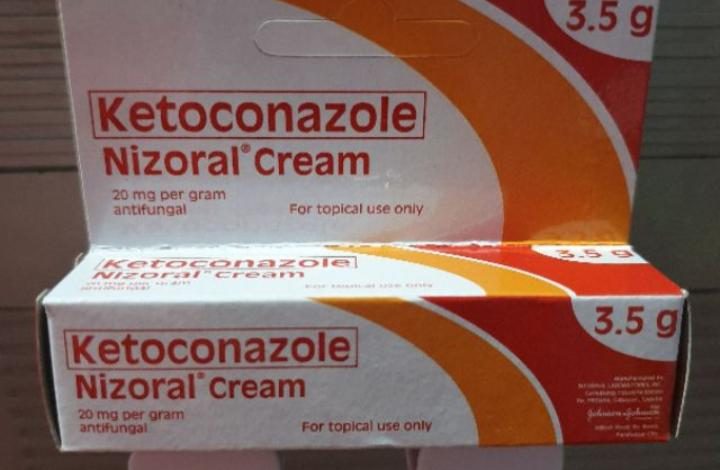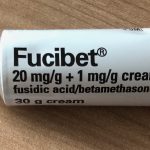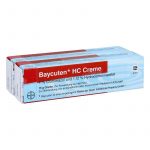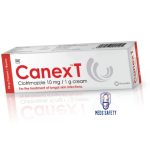Ketoconazole Cream: Uses, Benefits, How it Works, Dosage, Side Effects, Interactions

What Is Ketoconazole Cream Used For?
Ketoconazole cream is a topical medication used to treat various skin conditions caused by fungal infections. It contains the active ingredient ketoconazole, which is an antifungal agent. Some common uses of ketoconazole cream include:
1. Fungal Infections: Ketoconazole cream is often prescribed to treat fungal infections of the skin, such as athlete’s foot (tinea pedis), jock itch (tinea cruris), and ringworm (tinea corporis). It works by inhibiting the growth and spread of the fungi responsible for these infections.
2. Yeast Infections: In addition to fungal infections, ketoconazole cream can also be used to treat yeast infections, including cutaneous candidiasis. Yeast infections are caused by Candida species, and ketoconazole can help reduce the growth of these yeast organisms.
3. Seborrheic Dermatitis: Ketoconazole cream is sometimes used to manage seborrheic dermatitis, a skin condition characterized by redness, itching, and flaking of the skin. It is often associated with dandruff and can affect the scalp, face, and other areas of the body.
4. Tinea Versicolor: This is a fungal infection that causes discolored patches on the skin. Ketoconazole cream can be used to treat tinea versicolor by reducing the overgrowth of the responsible yeast on the skin.
It’s important to use ketoconazole cream as directed by your healthcare provider and to complete the full course of treatment, even if your symptoms improve before the medication is finished. If your condition does not improve or worsens while using ketoconazole cream, you should consult your healthcare provider for further evaluation and treatment options. Additionally, it’s essential to avoid using ketoconazole cream in the eyes, mouth, or other mucous membranes, as it is intended for external use only.
How to use ketoconazole cream
Ketoconazole cream should be used as directed by your healthcare provider or as indicated on the prescription label. Here are general guidelines on how to use ketoconazole cream:
1. Clean the Affected Area: Before applying ketoconazole cream, wash and thoroughly dry the affected skin area. Use a mild soap and water, and pat the area dry with a clean towel.
2. Apply a Thin Layer: Take a small amount of the ketoconazole cream (usually a pea-sized amount) and apply it to the affected area. Gently rub it into the skin, covering the entire infected area and a small amount of the surrounding skin.
3. Wash Hands: After applying the cream, wash your hands thoroughly unless you are treating your hands.
4. Frequency of Application: The frequency of application can vary depending on your doctor’s instructions and the specific condition being treated. Typically, ketoconazole cream is applied once or twice a day. Follow your healthcare provider’s recommendations.
5. Continue Treatment: Even if your symptoms improve before you’ve finished the entire course of treatment, it’s essential to continue using the cream for the full duration prescribed by your healthcare provider. Stopping treatment early may allow the infection to return.
6. Avoid Contact with Eyes, Mouth, and Mucous Membranes: Be careful to avoid getting the cream in your eyes, mouth, or other mucous membranes, as ketoconazole cream is meant for external use only.
7. Keep the Area Dry and Clean: Try to keep the treated area clean and dry between applications. Avoid tight-fitting clothing that may rub against the treated area.
8. Follow Doctor’s Recommendations: Always follow your healthcare provider’s recommendations and complete the full course of treatment even if the symptoms improve. If you experience any side effects or your condition worsens, contact your healthcare provider.
9. Check for Interactions: If you are using other topical medications or have any concerns about drug interactions, discuss them with your healthcare provider or pharmacist.
10. Storage: Store the ketoconazole cream in a cool, dry place, away from direct sunlight and out of the reach of children.
It’s crucial to use ketoconazole cream as directed to effectively treat fungal infections. If you have any questions or concerns about its use, consult your healthcare provider or pharmacist for guidance.
How long does it take for ketoconazole cream to work?
The time it takes for ketoconazole cream to work can vary depending on several factors, including the type and severity of the fungal infection being treated, the individual’s response to the medication, and how consistently the cream is applied. Here are some general guidelines:
1. Symptom Improvement: You may start to notice some improvement in your symptoms within the first few days of using ketoconazole cream. This can include a reduction in itching, redness, and other discomfort associated with the fungal infection.
2. Visible Changes: In some cases, you may observe visible changes in the affected area within one to two weeks of regular use. This could include a reduction in the size and appearance of rashes, scaling, or other skin abnormalities.
3. Complete Resolution: To completely clear a fungal infection and prevent it from returning, it’s essential to use ketoconazole cream for the full duration prescribed by your healthcare provider. This typically involves continuing treatment for several weeks, even if the visible symptoms have disappeared. Stopping treatment too soon may allow the infection to come back.
4. Chronic Conditions: In cases of chronic or recurring fungal infections, your healthcare provider may recommend using ketoconazole cream for an extended period or on an intermittent basis to prevent flare-ups.
It’s crucial to follow your healthcare provider’s instructions regarding the duration of treatment and how often to apply the cream. If you have any questions about the progress of your treatment or if your symptoms do not improve or worsen while using ketoconazole cream, contact your healthcare provider for further guidance. They may need to reevaluate your condition and consider alternative treatments if necessary.
Remember that consistent and thorough application of the cream to the affected area is essential for the medication to be effective. Wash and dry the area before each application and apply the cream as directed. Additionally, maintain good hygiene practices to prevent the spread of the fungal infection and avoid potential reinfection.
Ketoconazole Cream Side Effects
Ketoconazole cream is generally considered safe when used as prescribed, but like any medication, it can cause side effects in some people. Not everyone will experience these side effects, and some individuals may experience them to a greater or lesser degree. Common side effects of ketoconazole cream may include:
1. Skin Irritation: This is one of the most common side effects and can manifest as redness, itching, burning, or stinging at the site of application. This is typically mild and temporary.
2. Dry Skin: Some individuals may experience dryness at the application site.
3. Peeling or Flaking: Ketoconazole cream may cause the skin to peel or flake in the treated area.
4. Allergic Reactions: While rare, allergic reactions to ketoconazole cream can occur. If you notice symptoms such as hives, rash, itching, swelling, severe dizziness, or difficulty breathing, seek medical attention immediately.
5. Worsening of Skin Condition: In very rare cases, ketoconazole cream may worsen the skin condition being treated or cause new skin problems.
It’s essential to follow your healthcare provider’s instructions and apply ketoconazole cream only to the affected area and for the prescribed duration. If you experience any severe or unusual side effects or if the cream does not seem to be working, contact your healthcare provider.
In rare instances, systemic absorption of ketoconazole through the skin can occur, potentially leading to more severe side effects. This is more likely if the cream is applied to a large area of the body or if it is used for an extended period. If you experience symptoms such as nausea, vomiting, abdominal pain, yellowing of the eyes or skin (jaundice), or changes in heart rhythm, you should seek medical attention immediately.
It’s important to discuss any concerns about side effects or potential interactions with other medications with your healthcare provider or pharmacist before using ketoconazole cream. They can provide you with personalized guidance based on your medical history and current medications.
Ketoconazole Cream Interactions
Ketoconazole cream, when applied topically to the skin, is generally considered to have a lower risk of interacting with other medications compared to oral forms of ketoconazole. However, it’s still important to be aware of potential interactions, especially if you are using other topical medications or have certain medical conditions. Here are some considerations regarding interactions with ketoconazole cream:
1. Topical Medications: When using multiple topical medications on the same area of the skin, there is a potential for interactions. It’s advisable to consult with your healthcare provider or pharmacist if you plan to use other creams, ointments, or lotions on the same area where you are applying ketoconazole cream. They can advise you on the appropriate timing and order of application.
2. Oral Ketoconazole: While not an interaction with the cream itself, it’s essential to note that using oral ketoconazole (tablets) in addition to ketoconazole cream may lead to increased systemic absorption of the drug, potentially increasing the risk of side effects and interactions with other medications. Using both forms of ketoconazole should only be done under the supervision and guidance of a healthcare provider.
3. Corticosteroids: In some cases, ketoconazole cream may be prescribed in combination with a topical corticosteroid. This combination can be effective in treating certain skin conditions. However, it’s crucial to use these medications as directed by your healthcare provider to avoid potential side effects associated with prolonged corticosteroid use.
4. Medical Conditions: Inform your healthcare provider about any underlying medical conditions, allergies, or sensitivities you have, as these can impact the choice of topical medications and their potential interactions.
5. Pregnancy and Breastfeeding: If you are pregnant, planning to become pregnant, or breastfeeding, it’s important to discuss the use of ketoconazole cream with your healthcare provider. They can help weigh the potential benefits and risks and suggest alternative treatments if necessary.
6. Over-the-Counter Products: Be cautious when using over-the-counter (OTC) skincare products in combination with ketoconazole cream. Some OTC products may contain active ingredients that could interact with the antifungal properties of ketoconazole.
Always follow your healthcare provider’s guidance and recommendations when using ketoconazole cream or any other medications. They can provide personalized advice based on your specific medical history and the medications you are taking. If you have concerns about potential interactions, don’t hesitate to discuss them with your healthcare provider or pharmacist.





